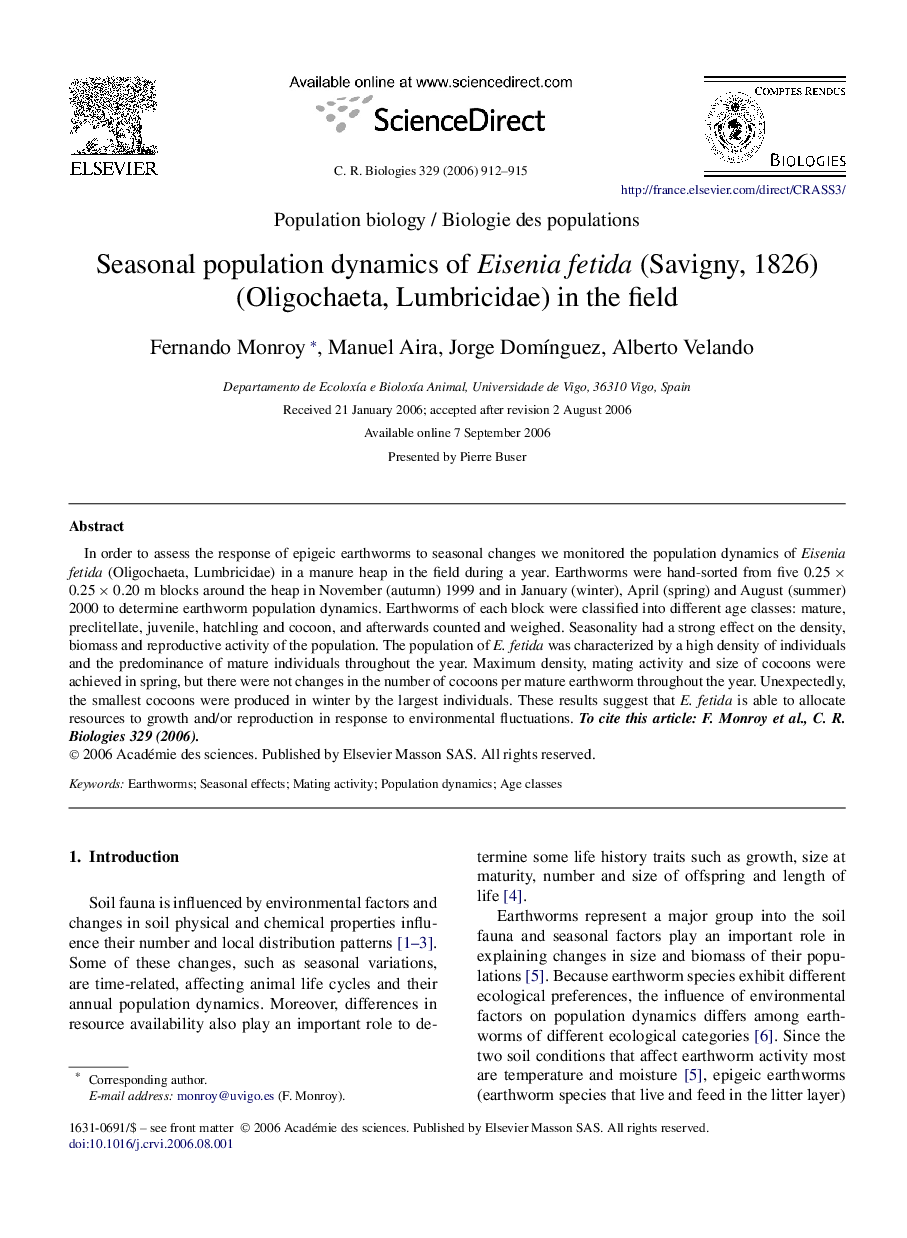| Article ID | Journal | Published Year | Pages | File Type |
|---|---|---|---|---|
| 2784774 | Comptes Rendus Biologies | 2006 | 4 Pages |
In order to assess the response of epigeic earthworms to seasonal changes we monitored the population dynamics of Eisenia fetida (Oligochaeta, Lumbricidae) in a manure heap in the field during a year. Earthworms were hand-sorted from five 0.25×0.25×0.20 m0.25×0.25×0.20 m blocks around the heap in November (autumn) 1999 and in January (winter), April (spring) and August (summer) 2000 to determine earthworm population dynamics. Earthworms of each block were classified into different age classes: mature, preclitellate, juvenile, hatchling and cocoon, and afterwards counted and weighed. Seasonality had a strong effect on the density, biomass and reproductive activity of the population. The population of E. fetida was characterized by a high density of individuals and the predominance of mature individuals throughout the year. Maximum density, mating activity and size of cocoons were achieved in spring, but there were not changes in the number of cocoons per mature earthworm throughout the year. Unexpectedly, the smallest cocoons were produced in winter by the largest individuals. These results suggest that E. fetida is able to allocate resources to growth and/or reproduction in response to environmental fluctuations. To cite this article: F. Monroy et al., C. R. Biologies 329 (2006).
